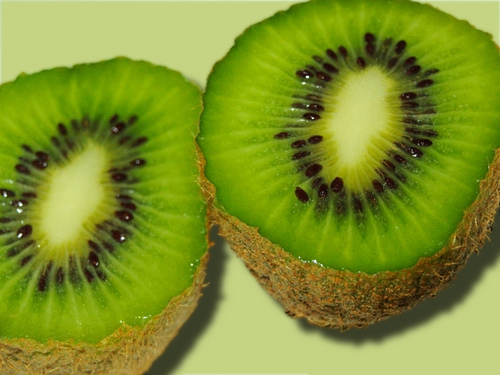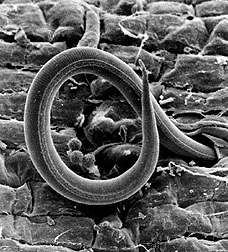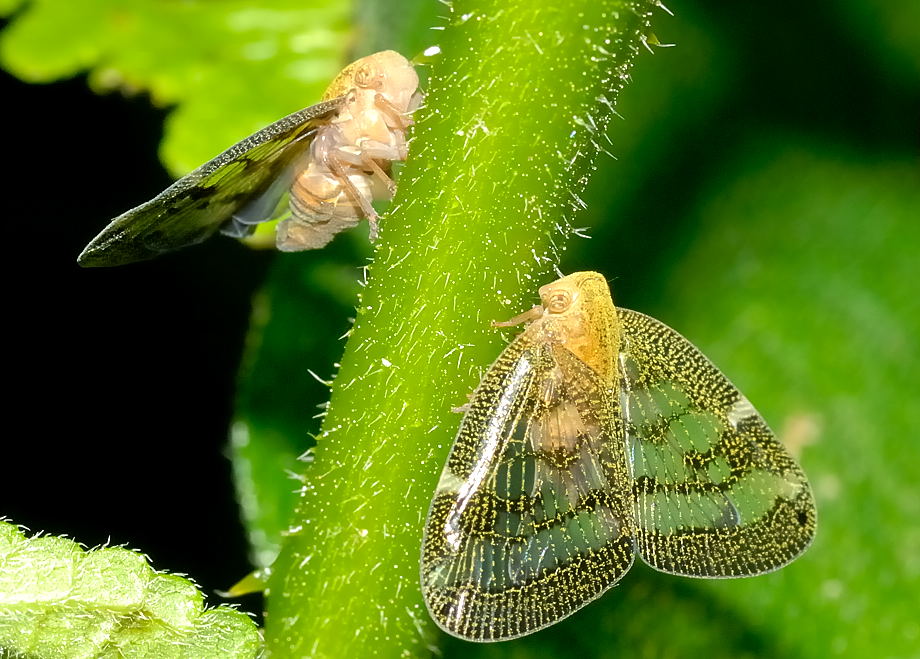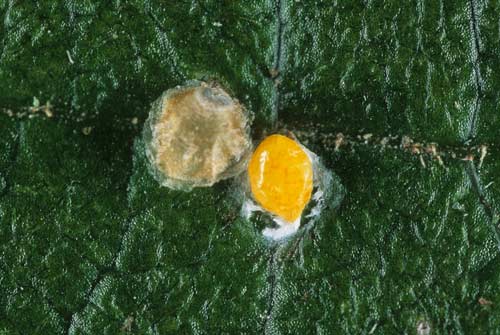Interactions
 Actinidia deliciosa provides a very
good source of nutrition for other organisms. This is why many
animals, including humans, eat the fruit that is generated. It
serves as food for many types of birds, mammals and insects.
Kiwifruit is extremely rich in Vitamin C. In about 100 grams of
fruit, there have been up to 420 milligrams of Vitamin C which
is four times the amount an average adult person needs in one
day!
Actinidia deliciosa provides a very
good source of nutrition for other organisms. This is why many
animals, including humans, eat the fruit that is generated. It
serves as food for many types of birds, mammals and insects.
Kiwifruit is extremely rich in Vitamin C. In about 100 grams of
fruit, there have been up to 420 milligrams of Vitamin C which
is four times the amount an average adult person needs in one
day!
A. deliciosa also provides some medicinal purposes
for humans. The vines, roots and branches have been used as a
diuretic, a fever reducer, and even a sedative. People have also
used parts of the plant to treat rheumatoid arthralgia and even
liver and esophagus cancers.
 While some organisms just eat the fruits of the vine, there are
others that are pests and cause diseases. For example the vines
are vulnerable to rootknot nematode (Meloidogyne hapla)
attacks where they cause cuts in the outside layer of the plant.
The leaf roller (Ctenopseustis obliquana) also is a
pest of the plant, eating holes in the skin. Another pest is the
While some organisms just eat the fruits of the vine, there are
others that are pests and cause diseases. For example the vines
are vulnerable to rootknot nematode (Meloidogyne hapla)
attacks where they cause cuts in the outside layer of the plant.
The leaf roller (Ctenopseustis obliquana) also is a
pest of the plant, eating holes in the skin. Another pest is the passionvine hopper which sucks sap out of the vine and drips
honeydew onto the fruits. This honeydew causes a mold to grow
and ruins the fruit. Other disease causing organisms include the
greedy scale insect which
passionvine hopper which sucks sap out of the vine and drips
honeydew onto the fruits. This honeydew causes a mold to grow
and ruins the fruit. Other disease causing organisms include the
greedy scale insect which
 infests the leaves and fruit, a small
moth (Stathmopoda skellone) which also damages the
fruit, and Agrobacterium tumefaciens which causes crown
gall, a disease of the vine.
infests the leaves and fruit, a small
moth (Stathmopoda skellone) which also damages the
fruit, and Agrobacterium tumefaciens which causes crown
gall, a disease of the vine.

However, kiwifruit does not only get used, it also uses other
organisms. Because it is a climbing vine, it must find sturdy
support structures to twine up. In nature, it typically relies
on other plants, like trees or shrubs.
It also uses insects, mainly honeybees, to help with
reproduction. Kiwifruit relies on its relationship with insects
to transfer pollen from plant to plant, as described on
reproduction.